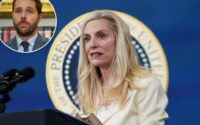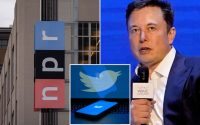Consumer prices rose 6.5% in December as Fed mulls next rate hike
Inflation cooled from its torrid pace in December, but still remained well above the Federal Reserve’s target as the central bank weighs pressing ahead with interest rate hikes that have rattled the US economy.
The December reading of the Consumer Price Index, a closely watched measure of the cost of everyday goods and services, showed that prices rose 6.5% compared to the same month one year earlier.
On a monthly basis, prices declined 0.1% compared to November, according to the Bureau of Labor Statistics’ latest release on Thursday.
Core inflation, a measure which excludes volatile food and energy prices, rose 5.7% year-over-year.
Food and housing prices remained a source of pain for US household budgets last month. The overall food index jumped by 10.4% year-over-year. Grocery prices rose at an even higher 11.8% clip.


Several staple grocery items posted eye-popping increases in December even as inflation cooled. Eggs jumped by a whopping 59.9%, while dairy products increased 15.3% and poultry rose 12.2%.
The services index, which includes housing, transportation and medical care, rose 7% compared to last year.
A decline in the gasoline price index was “by far the largest contributor” to the monthly decline in overall inflation, according to the BLS.
US stocks were mixed after the inflation data surfaced. The Dow Jones Industry Average rose about 120 points, while the tech-heavy Nasdaq fell about 100 points and the broad-based S&P 500 was flat.
Investors took the December CPI report as an encouraging sign for Fed policy. After the report’s release, the market was pricing in an 92.2% probability of a quarter-percentage-point interest rate hike at the Fed’s next meeting and just a 7.8% probably of a larger half-point hike, according to CME Group data.
A day earlier, the probability of a quarter-point hike was seen as lower at 76.7%.

The data matched Wall Street’s expectations. Ahead of the December CPI report, economists projected that headline inflation would up 6.5% compared to the previous year and core inflation would rise 5.7%.
Inflation has cooled in recent months after surging to a decades-high peak of 9.1% last June. Nevertheless, Americans are still paying abnormally high prices for essentials such as groceries and rent.
Additionally, inflation is still running well above the Fed’s 2% target level.
Fed Chair Jerome Powell and other central bank policymakers have stressed that they will need to see clear signals that inflation has eased before pausing interest rate hikes.

Policymakers signaled more increases are likely in 2023 and that the Fed’s benchmark rate is likely to remain in restrictive territory for some time. The central bank implemented seven consecutive hikes last year.
Multiple Fed officials have struck a hawkish tone in remarks ahead of the latest inflation data.
Atlanta Fed President Raphael Bostic, a non-voting member of the rate-making Federal Open Market Committee, said he would prefer raising the benchmark rate above 5%, from its current range of 4.25% to 4.50%.
Separately, Richmond Fed President Thomas Barkin teed up more increases by declaring “we still have work to do” to bring prices back to normal.
During a speech in Sweden earlier this week, Powell gave no clear signal about the size of the Fed’s next rate hike.

“Price stability is the bedrock of a healthy economy and provides the public with immeasurable benefits over time,” Powell said. “But restoring price stability when inflation is high can require measures that are not popular in the short term as we raise interest rates to slow the economy.”
Stocks had steadily moved higher in the days prior to the December CPI report’s release – a sign that the market was optimistic about a favorable result.
Investors have feared for months that the Fed will overdo its effort to tame inflation and topple the US economy into a severe recession.
Fed officials will announce their latest decision on the benchmark interest rate at the conclusion of their next two-day meeting on Feb. 1.


